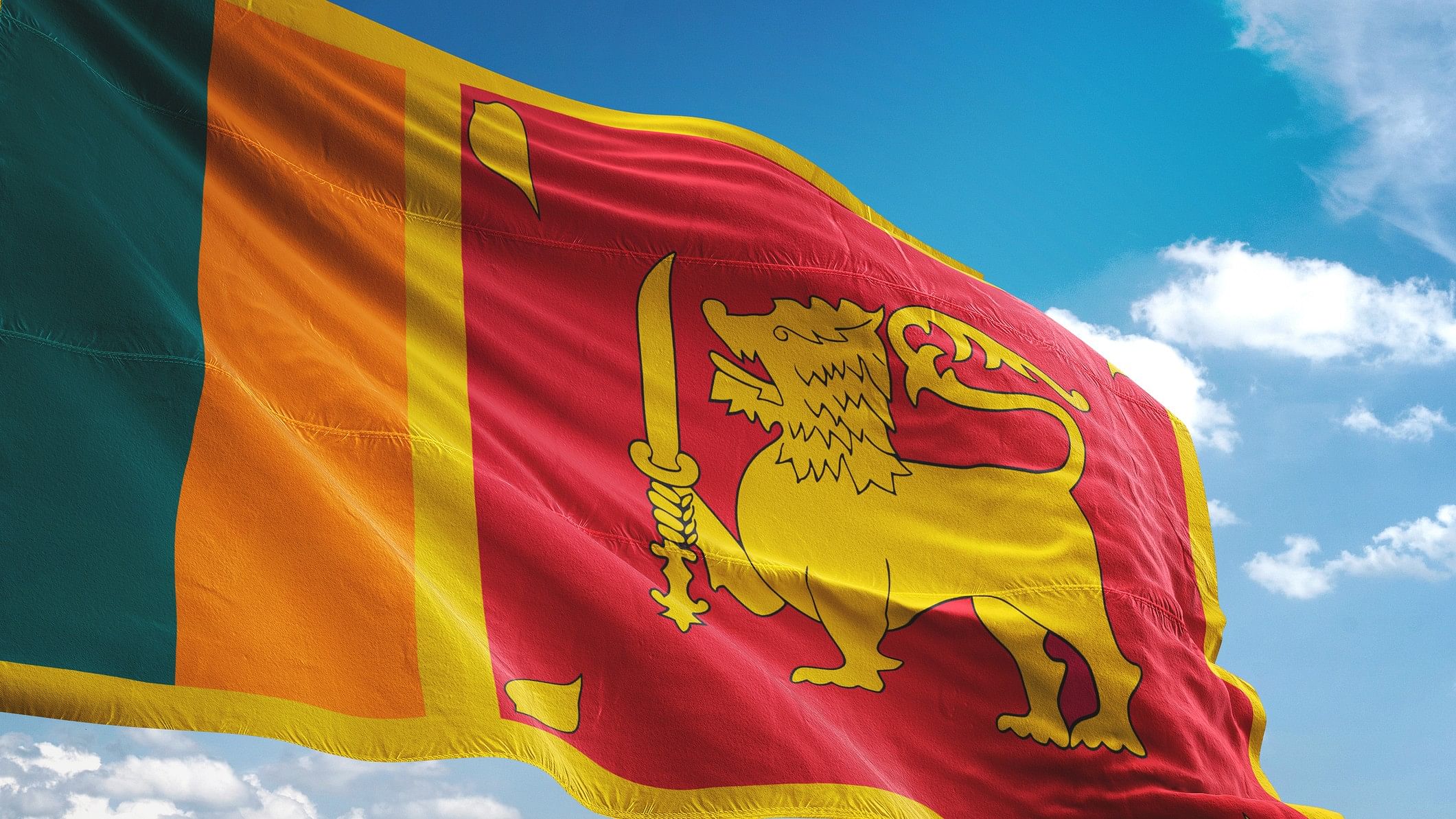
Representative image showing the Sri Lanka flag.
Credit: iStock Photo
The recent 5-day visit to India by a Janatha Vimukthi Peramuna (JVP) delegation from Sri Lanka raised many eyebrows and questions due to the JVP’s historically anti-India stance. What factors led to the U-turn and the new bonhomie between India and the JVP?
Formed in 1965, the JVP came into being as a result of the then-prevailing socioeconomic crisis in Sri Lanka and the failure of the established Sri Lankan Communist parties to address the crisis. It went on to bring about two insurrections in the 1970s and 1980s. Unlike the common perception of the JVP as a leftist organisation, its ideology shifted between the left and right. On the one hand, it claimed to represent leftist ideologies ranging from Marx to Che Guevara and later “Trotskyism without Trotsky.” Its leftist claim was symbolised by the colour red, populist welfarism, and opposition to globalisation. The first insurrection by JVP in April 1971, in fact, drew
inspiration from the successful Cuban revolution led by Fidel Castro.
On the other hand, the JVP’s rightist stance was noted by its appeal to Sinhala nationalism and exclusivist outlook towards minorities. Its cadre was predominantly Sinhala, although it initially had a handful of Tamil supporters. Most of the active members of the group were educated, unemployed rural Sinhala, mostly poor, the so-called “Fourth Person.” Although there was no caste-based recruitment or domination, lower-caste Sinhalese were attracted to the JVP’s agenda. Apart from this, the group also dominated student unions at major Sri Lankan universities. The present JVP leader, Anura Kumara Dissanayake, was among the products of the university. The JVP held that it “should arm itself to confront the potential threat of a neo-colonial dictatorial regime that could have been established by the pro-US elements.”
The JVP’s organisation was marked by bureaucratic centralism rather than democratic centralism, which means there was no room for questioning or independent critical thinking. In the incipient stage, its leadership consisted of the “Group of 21,” headed by Rohana Wijeweera. The motivation of its cadres derived largely from five lectures covering topics like ‘Capitalist Economic Crisis’, ‘Indian Expansionism’, ‘Independence’, ‘The Left Movement’, and ‘The Path of the Sri Lankan Revolution’.
In its first insurrection, JVP used blitzkrieg tactics: swift, short, and fierce. The plan was to cause confusion by capturing all police stations and thus gaining power. The attack did not succeed because of some confusion among the JVP cadres about the date and timing of the attack and partly due to the then Sri Lankan government’s countermeasures, aided by India.
The second insurrection by JVP in 1987–89 was based solely on an anti-Indian agenda. It termed the Indo-Lanka Accord (1987) as the “Second Kandyan Convention” (the Kandyan Convention of 1815 led to the gradual takeover of Ceylon by the British). The JVP tried to project the IPKF, which was deployed to implement the Accord, as a tool of “Indian expansionism.” It went to the extent of calling IPKF the “monkey force,” drawing parallels to mythological vanara sena’s aid to Lord Rama against Lanka’s Ravana. It even called the LTTE the “fifth battalion” of the Indian government. But the fact was that the Kandyan Convention was signed between Kandyan chieftains to depose Indian-origin king Sri Wikreme Rajah Sinha, and the LTTE bitterly fought against the IPKF. JVP also opposed the Provincial Council system that was introduced with strong Indian backing as a political settlement to the ethnic issue.
Even after renouncing violence and turning into a political party in the 1990s, JVP continued to oppose India’s involvement and presence in Sri Lanka’s political and economic spheres. It raised concerns over the Economic and Technology Co-operation Agreement between India and Sri Lanka, protested against the Colombo port deal, and even modernisation of Trincomalee oil tank farm.
Considering this historical context, the present JVP delegation appears to be a U-turn in its stance towards India. The JVP has come a long way from its communist and anti-Indian rhetoric and is now positioning itself as an alternative political force. If JVP were to form a government in Sri Lanka in the future, India cannot be ignored. JVP leader Dissanayake himself admitted: “We do know that India, who is our closest neighbour, has become a major political and economic centre. So, when we take economic and political decisions, we will always care about how they will impact India.” On its part, India has also been reaching out to the political actors of all shades—minority, majority, hardline, and moderate—in Sri Lanka. This is a good move, as ignoring one actor over the other is politically imprudent.
(The writer is Director, Centre for East Asian Studies, Christ (Deemed to Be University), Bengaluru)